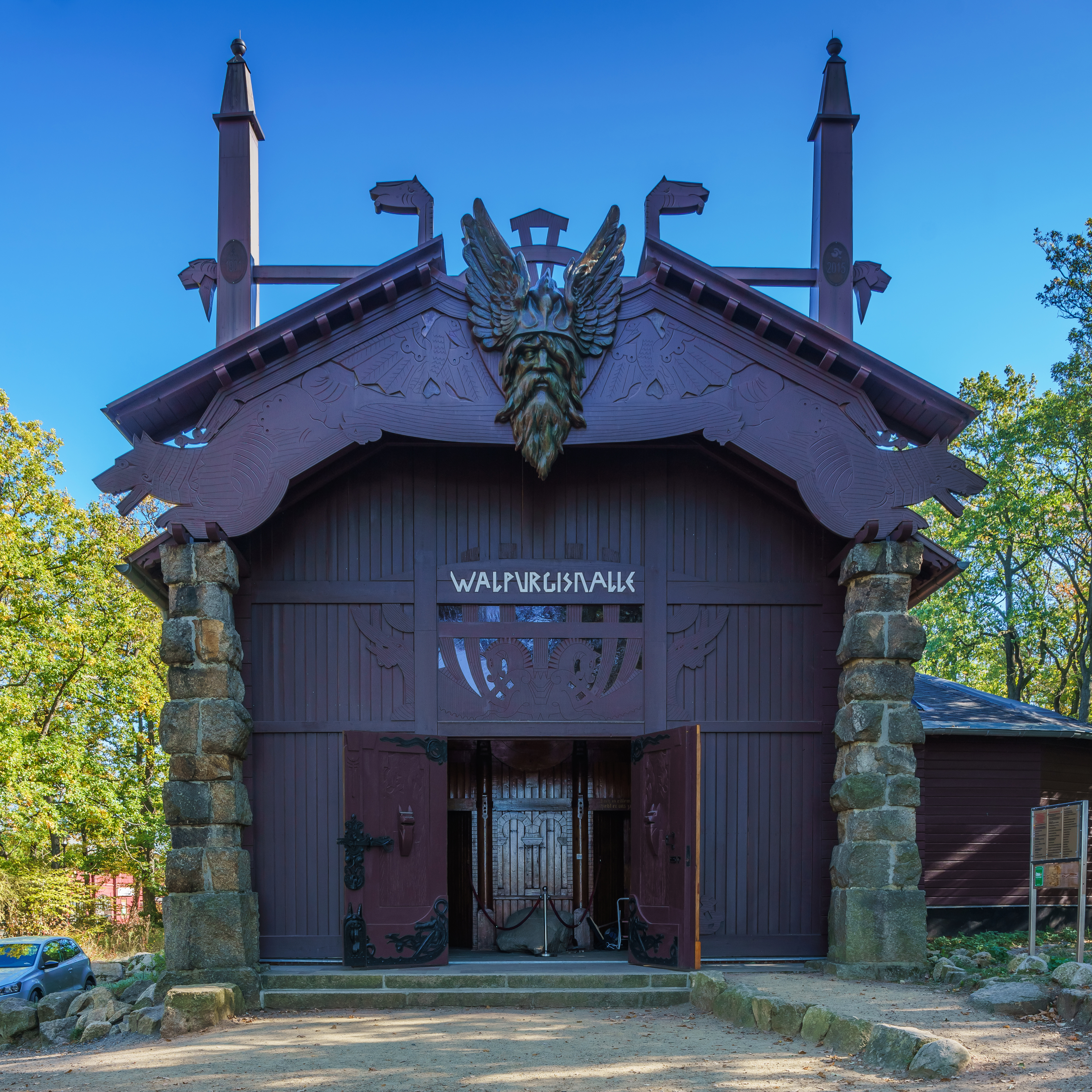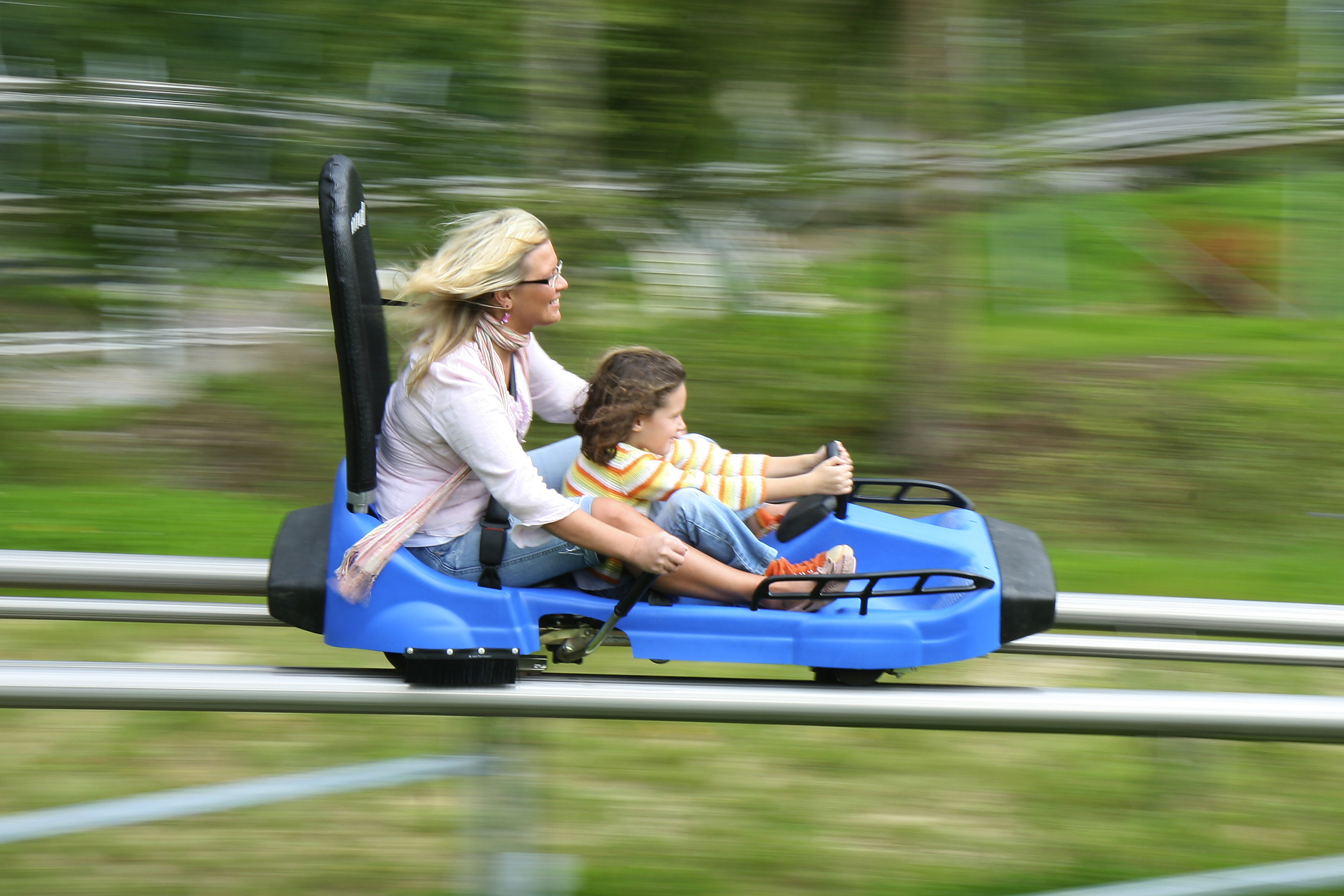|
Hexentanzplatz (Harz)
The ''Hexentanzplatz'' (literally “Witches′ Dance Floor”) in the Harz mountains is a plateau () that lies high above the Bode Gorge, opposite the Rosstrappe in Saxony-Anhalt, Germany. History The Hexentanzplatz is reputedly an Old Saxon cult site, at which pagan celebrations were held in honour of the so-called Hagedisen (forest and mountain goddesses), particularly on the night of 1 May. The place did not become known as the ''Hexentanzplatz'' until the cult was banned by the invading Christian Franks. According to tradition the site was guarded by Frankish soldiers in order to enforce the ban and they were chased off by Saxons dressed as witches and riding on broomsticks. Another old Saxon cult site is found on the Brocken. Above the Hexentanzplatz are the remains of the (“Saxon Dyke”), a wall of granite rocks and possibly part of a larger fortification, more than 1,500 years old. Tourism Since the middle of the 19th century there has been a mountain ho ... [...More Info...] [...Related Items...] OR: [Wikipedia] [Google] [Baidu] |
Bodetal2
The Bode Gorge (german: Bodetal) is a long ravine that forms part of the Bode valley between Treseburg and Thale in the Harz Mountains of central Germany. The German term, ''Bodetal'' (literally "Bode Valley"), is also used in a wider sense to refer to the valleys of the Warme and Kalte Bode rivers that feed the River Bode. At the Bode Gorge, the River Bode, which rises on the highest mountain in the Harz, the Brocken, has cut deeply into the hard Ramberg granite rock. The ravine is about 140 m deep at Treseburg and some 280 m deep at Thale where it breaks out into the Harz Foreland. The Bode Gorge was designated a nature reserve as early as 5 March 1937; its boundaries being subsequently expanded. With an area of, currently , it is one of the largest nature reserves in Saxony-Anhalt. Geology Apart from intrusions of Ramberg granite, which rose to the surface and solidified 300 million years ago in the Upper Carboniferous Period, and their associated veins o ... [...More Info...] [...Related Items...] OR: [Wikipedia] [Google] [Baidu] |
Walpurgishalle
The Walpurgis Hall (german: Walpurgishalle) is a hall on the Witches' Dance Floor near Thale in the Harz mountains, Germany, built in the Old Germanic style by Hermann Hendrich and Bernhard Sehring. The hall was opened in 1901 and is a museum today. Whilst Sehring designed the architecture of the building to Hendrich's guidelines, Hendrich himself was responsible for the five large paintings in the interior of the hall. These portray scenes of the Walpurgis Night from Goethe's Faust Faust is the protagonist of a classic German legend based on the historical Johann Georg Faust ( 1480–1540). The erudite Faust is highly successful yet dissatisfied with his life, which leads him to make a pact with the Devil at a crossroa ... known as the: ''Will-o'-the-Wisp Dance'', ''Mammon's Cave'', ''Witches' Dance'', ''Bride of the Wind'' und ''Gretchen's Appearance'' (''Gretchen's Tragedy''). Paintings Walpurgishalle Irrlichtertanz.jpg, Will-o'-the-Wisp Dance Walpurgishalle Mamm ... [...More Info...] [...Related Items...] OR: [Wikipedia] [Google] [Baidu] |
Harzer Wandernadel
The Harzer Wandernadel is a system of hiking awards in the Harz mountains in central Germany. The hiker (or mountain biker) can earn awards at different levels of challenge by walking to the various checkpoints in the network and stamping his or her passbook to record the visit. With 222 checkpoints in three federal states and across five districts in the Harz and with membership in five figures, the system has gained a following Germany-wide. Purpose The idea of the ''Wandernadel'' (literally "hiking needle/pin" --> "hiking badge") is to give those holidaying in the Harz a worthwhile goal to achieve and encourage them to stay for longer or return. It also aims to encourage those who live in the local area to go hiking and improve their fitness. In addition the system helps tourists and locals to get to know the many different sights and hiking trails in the Harz. To that end, checkpoints have been located at scenic viewing points, places of geological or botanical, culturalbo ... [...More Info...] [...Related Items...] OR: [Wikipedia] [Google] [Baidu] |
Homburg Watchtower
The Homburg Watchtower (german: Homburgswarte) is an observation tower on the site of a Germanic refuge castle (''Fliehburg'') near the Hexentanzplatz above the town of Thale in the Harz Mountains of central Germany. Location The Sachsenwall Way (''Sachsenwallweg'') runs through open oak woods to the Homburg Watchtower about 250 m northeast of the Harz Mountain Theatre on the ''Hexentanzplatz''. It is sited on the terrain of an old castle, the Homburg. History The Homburg – like the Winzenburg on the Rosstrappe on the other side of the gorge – acted as a refuge castle for Germanic tribes. It was built between 750 and 450 B. C. and was protected by the rampart system and the SachsenwallThe Sachsenwall referred to here is not the Limes Saxoniae, but the remains of a more-than-1500-year-old granite wall on the Hexentanzplatz in the immediate vicinity. In the southern part of the rampart system is a gap with a ditch in front of it; behind the eastern rampart is a walkway- ... [...More Info...] [...Related Items...] OR: [Wikipedia] [Google] [Baidu] |
Sommerrodelbahn
A summer toboggan is an amusement or recreational ride which uses a bobsled-like sled or cart to run down a track usually built on the side of a hill. There are two main types: an Alpine coaster or mountain coaster is a type of roller coaster where the sled runs on rails and is not able to leave the track, whereas with an Alpine slide the sled simply runs on a smooth concave track usually made of metal, concrete or fiberglass. Both of these types of ride are sometimes denoted with the German name ''Sommerrodelbahn''. They are often built by ski resorts in order to use existing winter infrastructure and provide additional summer income, although some installations are part of amusement parks or are standalone. , the longest summer toboggan in the world is the long ''Tobotronc'' alpine coaster at ''Naturlandia'' in Andorra. The highest in the world is the long Glacier 3000 alpine coaster in Gstaad, Switzerland which starts at an elevation of . [...More Info...] [...Related Items...] OR: [Wikipedia] [Google] [Baidu] |
Thale
Thale () is a town in the Harz district in Saxony-Anhalt in central Germany. Located at the steep northeastern rim of the Harz mountain range, it is known for the scenic Bode Gorge stretching above the town centre. Geography The town is situated on the river Bode, approximately west of Quedlinburg. Served by Transdev Sachsen-Anhalt trains, Thale Hauptbahnhof is the terminus of the Magdeburg–Thale railway line. The town has access to the Bundesstraße 6n highway. Divisions The town Thale consists of Thale proper and the following ''Ortschaften'' or municipal divisions:Hauptsatzung der Stadt Thale December 2014. * ... [...More Info...] [...Related Items...] OR: [Wikipedia] [Google] [Baidu] |
Bode Valley Gondola Lift
The Bode Valley Gondola Lift (german: Bodetal-Seilbahn) is a gondola lift built between 1969 and 1970 by the Czechoslovak collective combine Transporta Chrudim as a joint project with PGH Elektrotherm Quedlinburg in the vicinity of Thale in the Harz mountains in Lower Saxony, Germany. It runs from its valley station at a height of above sea level to the top station on the plateau of '' Hexentanzplatz'' ("Witch's Dancing Place"), which is high. The long, twin cable, gondola lift has inclines of up to 75 per cent in places. It has a total of 3 pylons, the lowest in the Bode valley having a height of . The other two pylons are designed for the gondola cabins to run over the top of them because of the steep inclines. The lift has 38 small cabins or 'gondolas', each with a capacity of 6 persons. The Bode Valley Gondola Lift operates all-year round (except for November). The cost is €3 for adults one-way (as at Aug 2011). See also *Wurmberg Gondola Lift The Wurmberg Gondola ... [...More Info...] [...Related Items...] OR: [Wikipedia] [Google] [Baidu] |
The First Part Of The Tragedy
''The'' () is a grammatical article in English, denoting persons or things already mentioned, under discussion, implied or otherwise presumed familiar to listeners, readers, or speakers. It is the definite article in English. ''The'' is the most frequently used word in the English language; studies and analyses of texts have found it to account for seven percent of all printed English-language words. It is derived from gendered articles in Old English which combined in Middle English and now has a single form used with pronouns of any gender. The word can be used with both singular and plural nouns, and with a noun that starts with any letter. This is different from many other languages, which have different forms of the definite article for different genders or numbers. Pronunciation In most dialects, "the" is pronounced as (with the voiced dental fricative followed by a schwa) when followed by a consonant sound, and as (homophone of pronoun ''thee'') when followed by a ... [...More Info...] [...Related Items...] OR: [Wikipedia] [Google] [Baidu] |






.png)